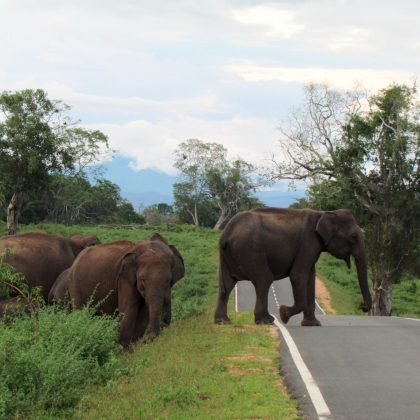Uniting in Resilience: How Collective Belief Heals War’s Hidden Wounds
This month there are two articles selected as the RCPsych Article of the Month for October. One of the two articles selected is ‘Effect of daily stressors and collective efficacy on post-traumatic stress symptoms among internally displaced persons in post-war northern Sri Lanka‘. The blog is written by authors Daya Somasundaram, Rajitha Wickremasinghe and Alvin Kuowei Tay and the article is published in BJPsych Open.
The artwork featured in the blog is by Dr Sri Naguleswaran, Consultant Psychiatrist (Old Age Psychiatry), Tees, Esk and Wear Valleys NHS Foundation Trust.
War doesn’t merely result in physical devastation. The mental and emotional aftermath, particularly from modern warfare that targets civilians, is profound. Civilians suffer alongside combatants, facing deaths, injuries, chronic disability, torture, disappearances, multiple displacements with uprooting of whole communities, loss of homes, destruction of essential services, infrastructure and environment. These traumatic experiences lead to a wide range of mental health issues, from depression, anxiety, PTSD, and substance abuse to family and collective trauma impeding personal and community recovery.
Communities bear scars that are sometimes less visible but deeply impactful. They grapple with disrupted social networks, broken institutions, and altered structures—elements that need to be considered in rehabilitation and recovery initiatives. Daily life stressors post-war, from familial concerns, widowhood and female headed households to economic struggles, can exacerbate the mental health challenges initiated by war traumas.
Sri Lanka’s North and East regions are glaring examples of this phenomenon. After a relentless 30-year war ending in 2009, the tangible reconstruction in terms of roads, communication and electricity was commendable. Yet, mental health and psychosocial needs were largely ignored unlike after the 2004 Asian Tsunami. While some efforts were made by entities like the Office of National Unity and Reconciliation (ONUR) and certain NGOs, most needs went unaddressed. Under the strict post war military governance even memorialization was forbidden, which would have helped with the grieving and recovery process. The general message was forget the past and look to the future. Significantly, despite considerable post-war reconstruction, the war-stricken North and East remain economically distressed, with inhabitants grappling with poverty in contrast to the rest of the country which benefited from the post-war peace dividend and boon to develop and progress to World Bank middle income status. A significant underlying factor for the economic disparity is the neglect of psychosocial rehabilitation of war affected communities.
But here’s where the role of Collective Efficacy becomes pivotal. As an extension of an individual’s belief in their capability, Collective Efficacy signifies a community’s shared belief in its collective strength and capability to effect change. This initial report of a study in northern Sri Lanka that explored long term individual and collective consequences of war and effectiveness of psychosocial interventions underscores its importance. Even a decade after the war, its traumatic effects persist, but communities with robust collective efficacy showed resilience. They countered both the residues of war trauma and daily life stressors more effectively.
In essence, the path to healing war-affected communities is twofold: addressing individual traumas and strengthening the community’s collective spirit. Interventions should be holistic, focusing on individual, family and community psychosocial health issues and daily stressors. By rebuilding communities and fostering a sense of collective faith in their joint actions, communities can better shield themselves against the lingering shadows of war and the pressures of the present.
This article addresses an important theme in mediation of post-traumatic stress symptoms which, though reported in a specific country, is pertinent to mental health outcomes globally after war with both refugees and internally displaced persons. The authors noted that when daily stressors are moderate or high, there is a significant relationship between past war trauma and psychological distress, even one decade post-war. Further, the authors noted that at higher levels of collective efficacy, the level of post-traumatic stress symptoms at a given score of war trauma is lower, indicating a protective effect of collective efficacy. Though this study has limitations (cross-sectional design, modest sample size, and selection bias), the reported findings are key to our appreciation of long-term effects of war trauma and the impact of addressing daily stressors to minimize post-traumatic stress symptoms.
Kenneth R. Kaufman
Editor-in-Chief, BJPsych Open







Reading Daya Somasundaram’s ‘The Vanni Narratives’ sharing the outcomes of an in-depth study among the deeply war-affected communities of the former northern warzone of Sri Lanka, there were intriguing notions that questioned what people knew about specific communities. Despite the collapse of a future separate political dream and the decimation of the LTTE by the state, this community held on to a belief that there was a ‘community life’ to return to. They sent their kids to school. They returned to farms and the cultural community life continued ruptured, traumatised and broken, something held.